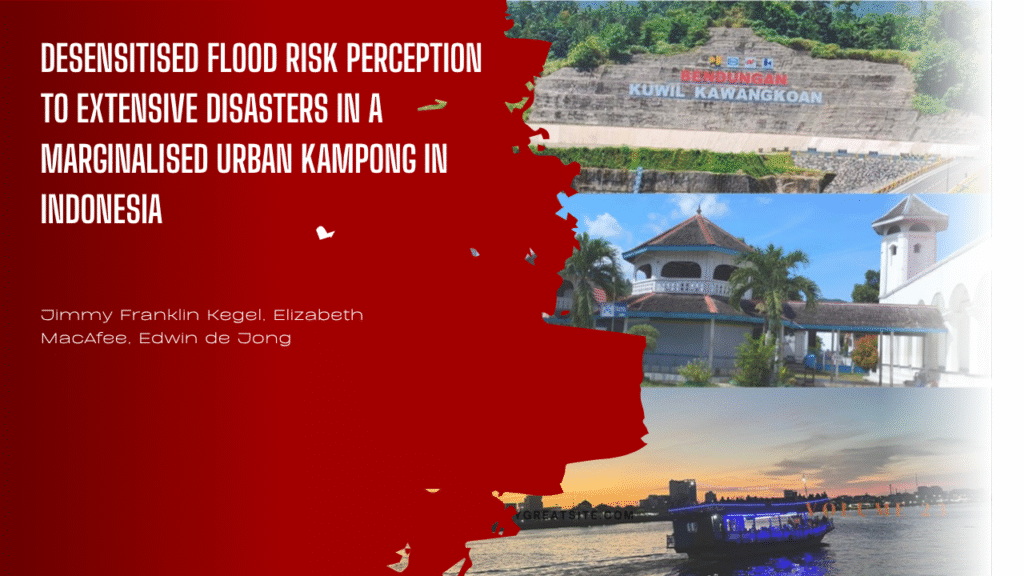Abstrak
Worldwide, flood risk is on the rise. Simultaneously, the UNDRR fears that humanity’s risk perception is
broken. Low-intensity, high-frequency extensive floods are cumulatively the most damaging
phenomenon. However, risk perception in the context of extensive floods is widely under-researched. Indonesia
is on the nexus of low-risk perceptions, extensive flood risk and poverty. Therefore, a socio-economically
marginalised and frequently flooded urban kampong where residents appear to exhibit low levels of
risk perception, serves as a case for this study.
Data was gathered through five months of fieldwork in Pontianak, West-Kalimantan, consisting of participatory
observations and semi-structured interviews. While studies often focus on subjective risk perception, this
study includes the socio-cultural context, and aims to understand differentiated perspectives on extensive
flood risk. Results show that extensive floods in Tambelan Sampit primarily lead to indirect losses.
Furthermore, risk perception is strongly shaped by the extensive characteristics of floods and the socio-cultural
context.
While risk perception in the kampong is low, we propose that in this specific case the risk perception
is desensitised rather than broken. Understanding risk perception as desensitised can add nuance to understandings
of people’s experience of (extensive) disasters, explain their behaviour towards risk and potentially inform
improved mitigation and adaptation policies.


